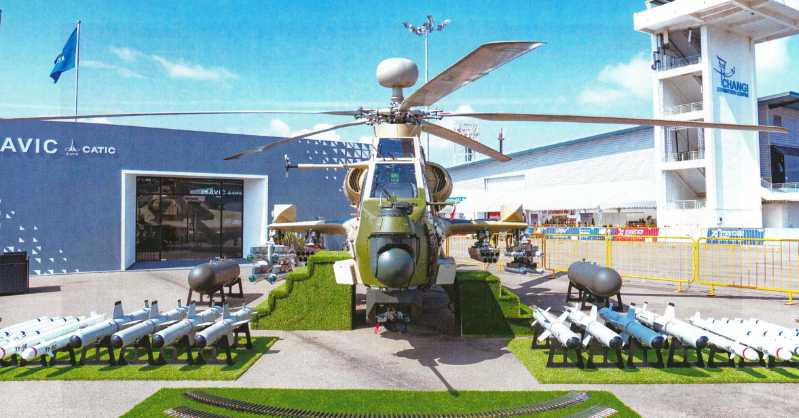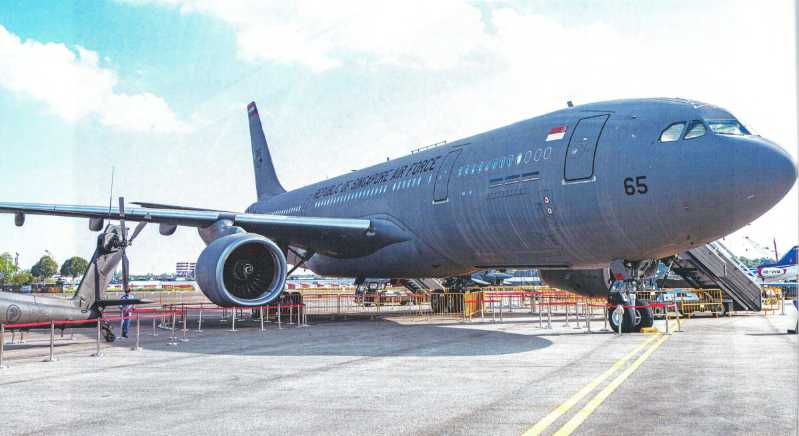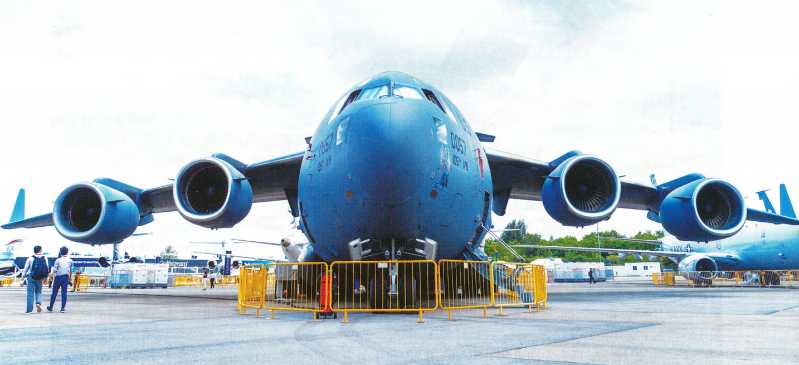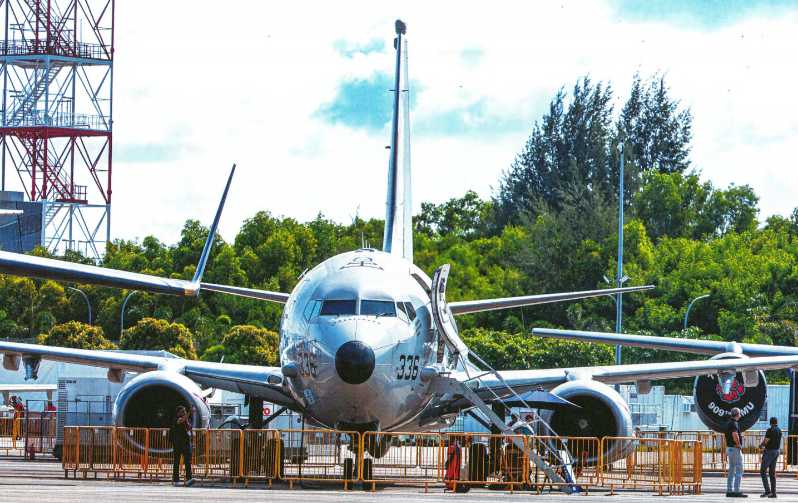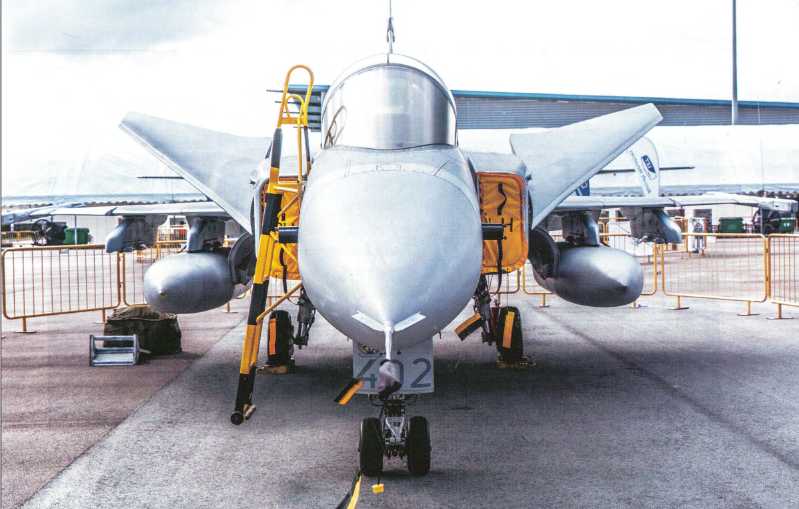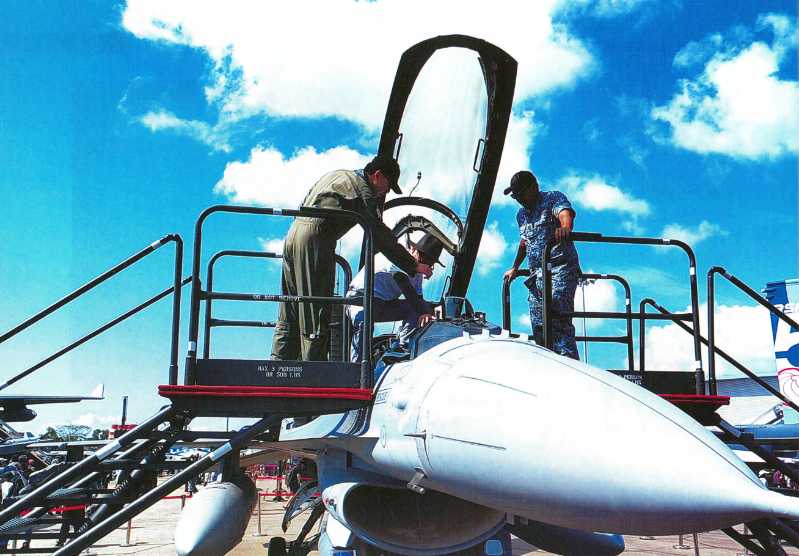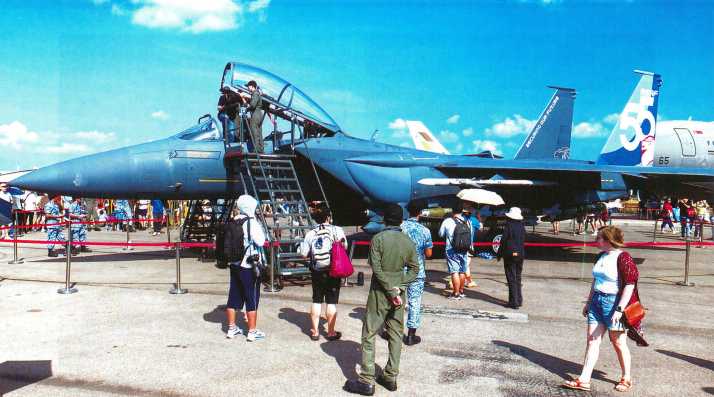From May 23 to 27, 2023, the Langkawi International Maritime and Aerospace Exhibition (LIMA2023) was held in Langkawi, Malaysia. The Langkawi LIMA Exhibition is one of the most influential comprehensive defense exhibitions in Asia, especially in Southeast Asia. In previous exhibitions, everyone’s focus was mainly on aviation weapons and equipment. In fact, Langkawi is also one of the best windows for the world’s naval equipment giants to show the most advanced naval equipment and technology to Asian, especially Southeast Asian buyers. This article will take you to see what new naval equipment and technologies are available at this LIMA2023.
The patrol ship "Francesco Morosini" belongs to the "Thaondi Revel" class offshore patrol ship. Although it is called a "patrol ship", the "Morosini" inherits the consistent tradition of the European Navy’s "small ship big building". The light load displacement reaches an astonishing 4,880 tons, and the full load displacement is 5,830 tons, reaching the size of a large frigate. The reason why the third-line patrol ships that "help" the navy are built so large is based on the design concept of the European Navy that focuses on the endurance and comfort of ships. Large ships can not only carry more fuel and supplies, but also have spacious interior space, good seaworthiness, comfortable living, and first-class human-machine efficiency, which can fully meet the needs of long-term patrol operations.
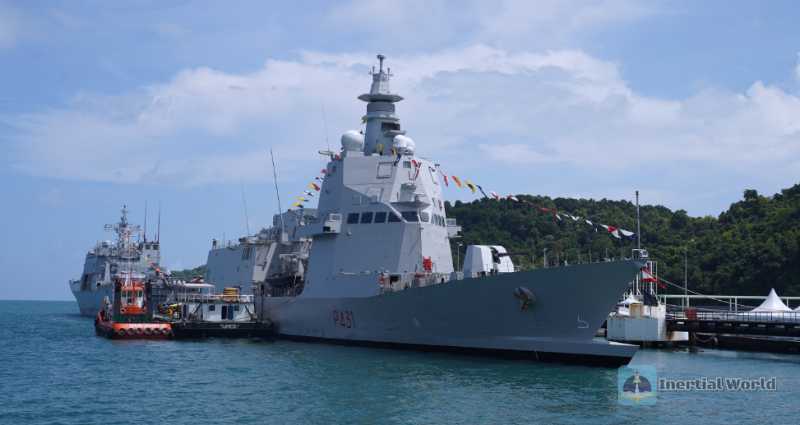
The "Morosini" patrol ship is 143 meters long, 16.5 meters wide, 10.5 meters deep, and 5 meters deep. Its propulsion system adopts the CODAG solution. The main power units include a General Electric LM2500 G4+ advanced gas turbine with a power of 32,000 kW (43,000 horsepower), two MTU 20V8000M91L diesel engines, each with a power of 10,000 kW (13,000 horsepower), and four MAN 12V175D-MEM diesel generator sets, each with a power of 1,640 kW (2,200 horsepower)
This high-performance power unit, which is not inferior to that of a main battle frigate, allows the ship to reach a maximum speed of 27 knots. If the gas turbine is used alone, the speed is 25 knots, and if the diesel engine is used alone, the speed is 18 knots. If the electric motor is used alone, the speed is 10 knots. The ship has a range of 5,000 nautical miles/15 knots (9,300 kilometers).
The Morosini patrol ship has 173 beds (plus 30 in the modular rear area) in different mission configurations, with a rated crew configuration of 90 and 120 people respectively, and a high degree of automation. The remaining beds can be reserved for medical or rescue missions. In addition, it can accommodate 24 crew members and two helicopters, and provides 89/59 beds for optional shipboard forces, including marines, maritime command personnel, etc.
In terms of sensor-command systems, the Morosini patrol ship is equipped with advanced configurations. It has a naval cockpit system developed and designed by Leonardo-Finmeccanica, a SADOC Mk4 CMS command and management system, a SAAM-ESDAAW air defense combat system, an LPI air and ground surveillance radar SPS-732, two X/Ka dual-band navigation radars, a static IRST (infrared search and tracking) system, and an AESA three-dimensional dual-band radar, especially an X-band radar.
In terms of electronic warfare systems, the Morosini patrol ship is equipped with the Elettronica-ELT Sp ZEUS system, RESM (radar electronic support countermeasures) RECM (radar electronic countermeasures), CESM (communication ESM), long-range acoustic warning devices and Oto Melara ODLS-20 electronic decoy launchers.
In terms of weapons and equipment, the Morosini patrol ship is equipped with 1 Oto Melara 127/64 mm Vulcano gun/automatic ammunition handling system (AAHS), 1 Oto Melara 76/62 mm Strales Sovraponte anti-aircraft gun, 2 Oto Melara-Oerlikon KBA B06 remote weapon station devices, 2 8-unit DCNS Silvi A70 missile vertical launch systems, which can launch up to 32 CAMM-ER ship-to-air missiles, or 16 Skarp anti-ship missiles, 8 Teseo Otomat Mk-2/E anti-ship/land attack missiles, and 2 torpedo launchers that can launch 324mm caliber "Black Arrow" torpedoes.
The "Morosini" patrol ship has an enviable large double hangar and a large flight deck of 25.5 meters x 16.5 meters, which can carry up to two SH-90s and one AW101 helicopter.
Although the "Morosini" patrol ship is called a "patrol ship", it has reached the main frigate standard in terms of ship size and tonnage as well as air defense, anti-submarine and anti-ship combat capabilities. In the Southeast Asian region, it can even reach the top battleship. Standard. The navies of Southeast Asian countries have always been very fond of the naval equipment of European countries such as France, the Netherlands, and Italy. The Italian Navy brought the "Morosini" to Langkawi for exhibition, which may be a "advertising" intention.
Fincantieri, the top shipbuilding giant in Italy, publicly exhibited the FCx30 frigate model in Asia for the first time, ambitiously wanting to conquer the Asian market.
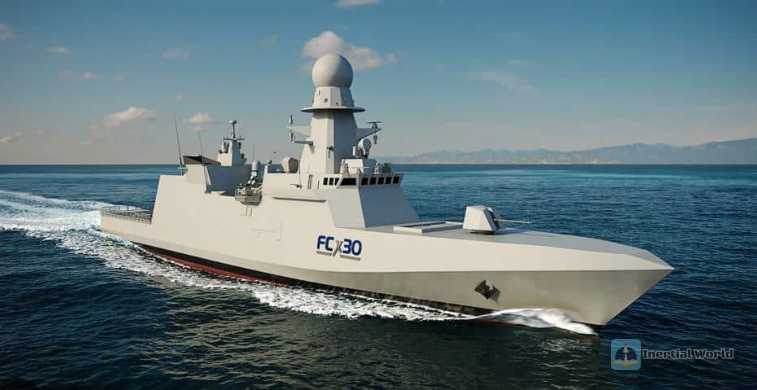
FCx30 frigate is not named frigate in English, but corvette, in Chinese If so, this indicates that the ship is a smaller "light frigate". The FCx30 frigate is 107 meters long, 14.7 meters wide, and 8.6 meters deep. It can be said to be large in size among light frigates, and its displacement is about 3,200 tons.
In terms of speed, the FCx30 frigate can reach a maximum of 30 knots. It can provide an impressive maximum range of 5,000 nautical miles at an average speed of 14 knots, demonstrating its endurance and long-term combat capability.
The main features of the FCx30 frigate include its combat capability and its emphasis on the survivability of front-line ships. Equipped with Advanced digital and dual-set ship command and control systems, as well as redundant mechanisms, ensure optimal functionality, reliability and resistance to adverse conditions at sea.
In its patrol configuration, the FCx30 frigate is an excellent multi-purpose vessel. It has maritime defense capabilities and is equipped with special forces RHIBS (rigid hull inflatable boats) adapted to various combat requirements. The main missions of the FCx30 frigate include a wide range of tasks. In combat scenarios, it can act as a master in all war domains, including its ability to participate in tactical ballistic missile defense and promote extended interoperability between naval forces. For patrol missions, the FCx30 frigate excels in maritime counter-terrorism, blockade support and anti-piracy operations. These efforts highlight its role in maintaining maritime security and protecting international waters.
The FCx30 frigate has good firepower, including a 76mm naval gun, a 16-unit vertical missile launch system and two 4-mounted anti-ship missile launchers.
Obviously, the FCx30 frigate is also suitable for and meets the needs of Southeast Asia, where the vast seas require certain armament and firepower performance, as well as seaworthiness and endurance.
At the LIMA2023 exhibition, Mitsubishi Heavy Industries of Japan presented a model of its MRSS multi-purpose support ship proposal for the Royal Malaysian Navy for the first time.
The MRSS (Multi-Purpose Support Ship) is a multi-purpose transport ship designed to perform a variety of roles, including logistics deployment, humanitarian assistance and disaster relief operations.
As a world-renowned shipbuilding company and the main builder of various combat ships of the Japan Maritime Self-Defense Force, Mitsubishi Heavy Industries is able to deliver highly reliable ships, and its technical capabilities are based on its experience with the Japan Maritime Self-Defense Force’s LST Osumi-class transport ship, which was involved in rescue and transportation work after the Great East Japan Earthquake and has conducted operations in other countries.
In terms of size, the MRSS is 160 meters long, 24 meters wide and has a draft of 6 meters. It has a speed capability of 20 knots, with effective transport and maneuverability. The crew required to operate the vessel consists of 150 people who are responsible for managing the ship’s systems, navigation and performing various tasks related to its mission.
Overall, the MRSS is a comprehensive multi-purpose support ship capable of performing a wide range of functions, from logistical support and disaster relief to territorial defense. Her specifications and technical capabilities make her well suited to handle complex operations in challenging environments.
According to various sources, the Malaysian Navy is actively studying the construction of multi-purpose support ships to enhance the transport and supply capabilities of the naval fleet. In the past two decades, the Royal Malaysian Navy has developed rapidly, from main battle ships, patrol ships, landing ships to submarines, which can be described as balanced development. However, a strong naval force cannot be without strong transportation and supply capabilities. Being able to realize and begin to make up for this weakness shows that the construction of the Malaysian Navy is going deep. This new navy in Southeast Asia is becoming more and more balanced and stronger.
The UAE is a newly emerging military industrial country in Asia in the past decade. Through channels such as purchasing foreign military enterprises, joint ventures with advanced military enterprises, and independently building domestic military enterprises, it has begun to enter the military industry with great strides. The field of naval equipment is undoubtedly one of the markets targeted by the UAE. At this LIMA2023 exhibition, the UAE’s local ADSB company brought its newly developed high-speed stealth light frigate products to the exhibition.
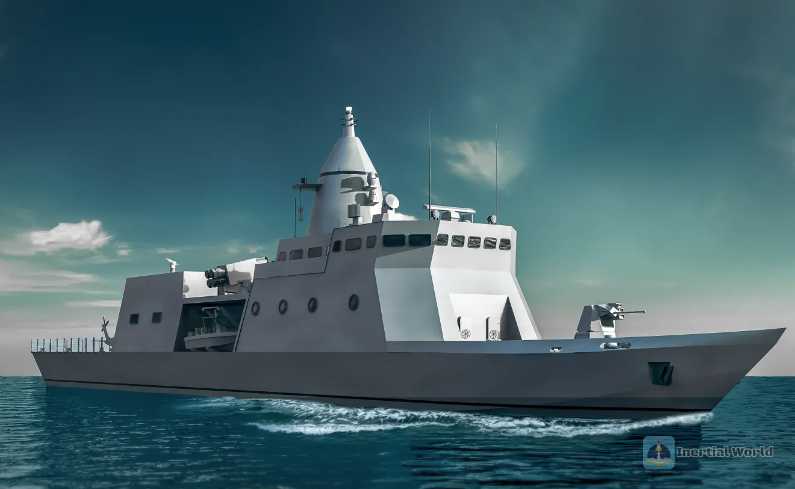
This high-performance fast pioneer ship was carefully designed by ADSB of the UAE. Information about the model was first released at the LIMA 2023 exhibition (LIM A2023). The new 92-meter corvette is tailor-made for a variety of coastal combat and patrol missions and boasts an impressive array of features. These include a helicopter deck and hangar, the ability to accommodate Unmanned Aerial Vehicle (UAV) operations, two rigid hull inflatable boats, advanced combat systems, electronic warfare (EW) capabilities, and comprehensive countermeasures. The corvette is equipped with stealth technology and ballistic protection capabilities and provides superior surveillance and security capabilities across the air, surface and EW domains in the littoral environment. Powered by a combined diesel-diesel (CODAD) engine, the ship can reach a maximum speed of 28 knots and demonstrates a strong endurance of more than 4,500 nautical miles at cruising speed.
At present, the specific design model of the ship has not been exhibited, and key performance indicators such as the main scale of the model have not been announced to the public. However, with the ambitious style and attitude of the UAE, the design of the new ship is expected to be finalized soon, and it is expected that it may appear at international defense exhibitions such as the Abu Dhabi Naval Exhibition in the near future.
At the Langkawi LIM A2023 exhibition, Italian arms giant Leonardo announced a good news that the company won the contract for the Malaysian Navy’s tender for two maritime patrol aircraft projects. The winning aircraft is the ATR-72 MPA patrol aircraft.
ATR-72 MPA is a twin-turboprop aircraft specially designed for complex maritime patrol missions. As a specialized variant of the world-renowned ATR regional transport aircraft, it is equipped with advanced security and surveillance systems developed by Leonardo. Its multifunctional capabilities include maritime surveillance, anti-submarine warfare (ASW), anti-surface warfare (AsuW), search and rescue (SAR), environmental monitoring, medical evacuation, and transportation of personnel and supplies.

The aircraft models selected by Malaysia maintain the reliability, maintainability, low life cycle cost and comfort of the baseline ATR-72-600. In addition, they will be equipped with flexible mission systems, advanced sensors and integrated communication suites for command, control, communications, intelligence, surveillance and reconnaissance (C4ISR) missions on land and at sea. These sensors and mission systems can operate independently or in a network-centric mode, facilitating the collection, processing and sharing of strategic data between operators and providing complete situational awareness.
The ATR-72 MPA is optimized for maritime patrol, electronic intelligence (ELINT) collection, surface and underwater target detection and tracking, search and rescue operations, combating illegal activities such as drug trafficking, piracy and smuggling, and protecting territorial waters. In addition, it has the potential to develop into a full-fledged anti-submarine warfare (ASW) and anti-surface warfare (AsuW) platform.
The Malaysian Navy configuration will include the modular Leonardo ATOS (Airborne Tactical Observation and Surveillance) mission system, which is already in service with various military and law enforcement agencies. ATOS manages the aircraft’s onboard sensors, integrates the information collected, and provides a comprehensive and continuously updated tactical picture to the mission system operator.
Leveraging its commercial heritage, the ATR-72 MPA features an ergonomic design that increases crew efficiency and effectiveness during missions lasting more than 8 hours. Special mission aircraft based on the ATR regional transport/passenger aircraft have proven their ability to meet the needs of diverse customers in the Asia-Pacific region. Local operators of ATR regional turboprop aircraft have benefited from extended logistical support, further consolidating the reliability and availability of the platform.
At this LIMA2023, Kongsberg, a long-established European naval equipment system research and development company, brought a rather advanced weapon system-the "Pioneer" maritime surveillance and protection system.
The system consists of a multi-functional mother ship with a multi-functional hangar that can support helicopters, unmanned aerial vehicles (UAVs) and unmanned surface vehicles (USVs) as needed. The mother ship is designed to launch and recover vehicles in high seas and can adapt to different roles by using ISO standard container storage equipment.
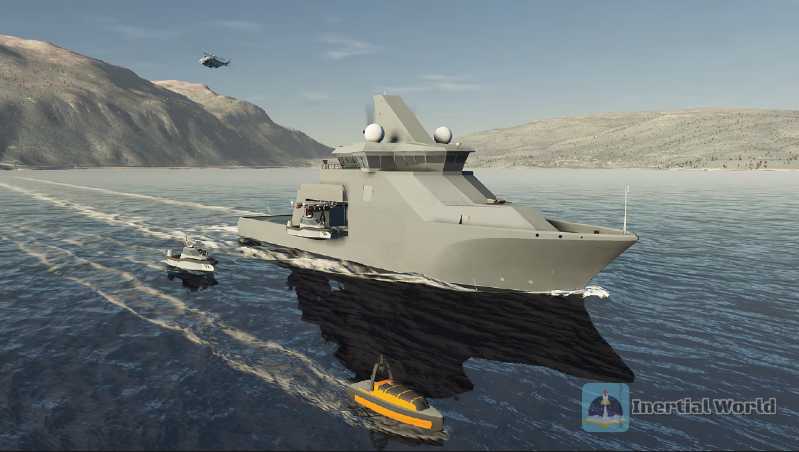
The "Pioneer" system combines Kongsberg Defense and Aerospace’s expertise in naval system integration, Salt Ship Design’s expertise in ship design for challenging waters, and Kongsberg Maritime’s expertise in ship equipment. This cooperation is based on their extensive experience in the field, ensuring a high-quality and adaptable system. One of the main advantages of the "Vanguard" system is its efficient "tailor-made design" procurement process, which includes customer participation in the design phase and local shipyards participating in the construction process. The result of this approach is a relevant, state-of-the-art ship with reduced construction time.
The system combines Kongsberg’s detection sensor system, radar system, unmanned platform system and communication system, command and control system to form an organic holistic product and solution. Whichever customer needs it, this "Vanguard" system solution can be transplanted to its platform. For small and medium-sized countries with poor self-research capabilities, which often need to "buy a horse in the east market and buy a saddle in the west market" to purchase naval weapon systems, and also lack the ability to integrate and integrate autonomous systems, this overall solution is obviously attractive and competitive.
Class LCS frigate
At this exhibition, a model of the "Lela Raja" class frigate (also known as a littoral combat ship) independently developed by the Malaysian Navy was exhibited.
The Lela Raja class frigate is an advanced naval vessel designed for a wide range of maritime operations. With a displacement of 3,100 tons and a length of 111 meters, this littoral combat ship (LCS)/frigate combines versatility and power. Her CODAD propulsion system consists of four MTU 20V1163M94 engines with a total output of 29,600 kW, a maximum speed of 28 knots and a range of 5,000 nautical miles.

The frigate is equipped with cutting-edge technology and has an array of sensors and processing systems. The French Naval Group SETIS combat system forms the backbone of its combat capability, while the Thales SMART-SMk2 search radar, Rheinmetall TMEOMk2 fire control radar and Thales TUSASW suite (including Kingklip Mk.1 hull-mounted sonar and CAPTAS-2 towed array sonar) enhance its situational awareness and anti-submarine warfare capabilities. In terms of armament, the "Leila Prince" class frigate is equipped with a Bofors 57mm naval gun and two MSIDS30M 30mm cannons for surface engagements. She also carries 16 VL "Mica" surface-to-air missiles for air defense (planned), 8 Naval Strike Missiles for anti-ship operations, and two triple J+S torpedo launchers for anti-submarine warfare. The ship can accommodate various types of drones and helicopters, with its stern hangar and helicopter landing platform. In terms of accommodating, taking off and landing, and using helicopters, the specifications can reach the level of 10-ton medium helicopters.
In terms of appearance, the "Lela Raja" class frigate is highly stealth. From its guns to its forecastle, from its integral mast to its chimney, its stealth design is much better than any other frigate and patrol ship currently in service in Southeast Asia, and represents the design level and standard of a new generation of frigates.




